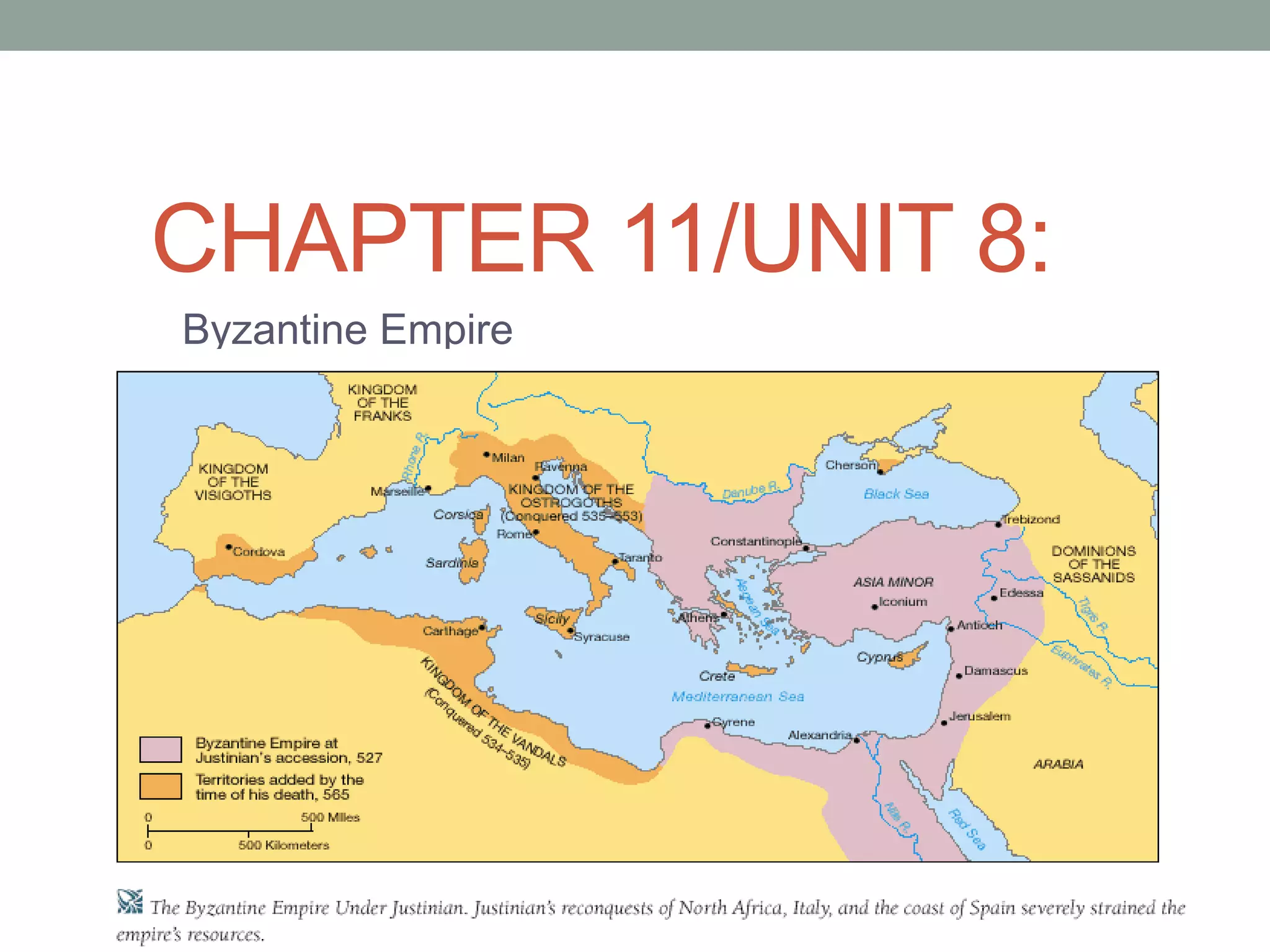The Byzantine Empire emerged after the fall of Rome, with its capital in Constantinople. It included parts of Europe, Asia, and Africa. Emperor Justinian expanded the empire through conquest but strained its resources. He also codified Roman law and built churches. The Orthodox Church worked closely with the government. Meanwhile, the prophet Muhammad spread Islam through the Middle East and North Africa. The Quran outlined the religion's beliefs and duties. As Islam expanded through trade and war, conquered lands adopted Islamic culture and governance. Non-Muslims faced restrictions and high taxes. Muslim advances in fields like banking, science, and navigation aided their expansion.



























